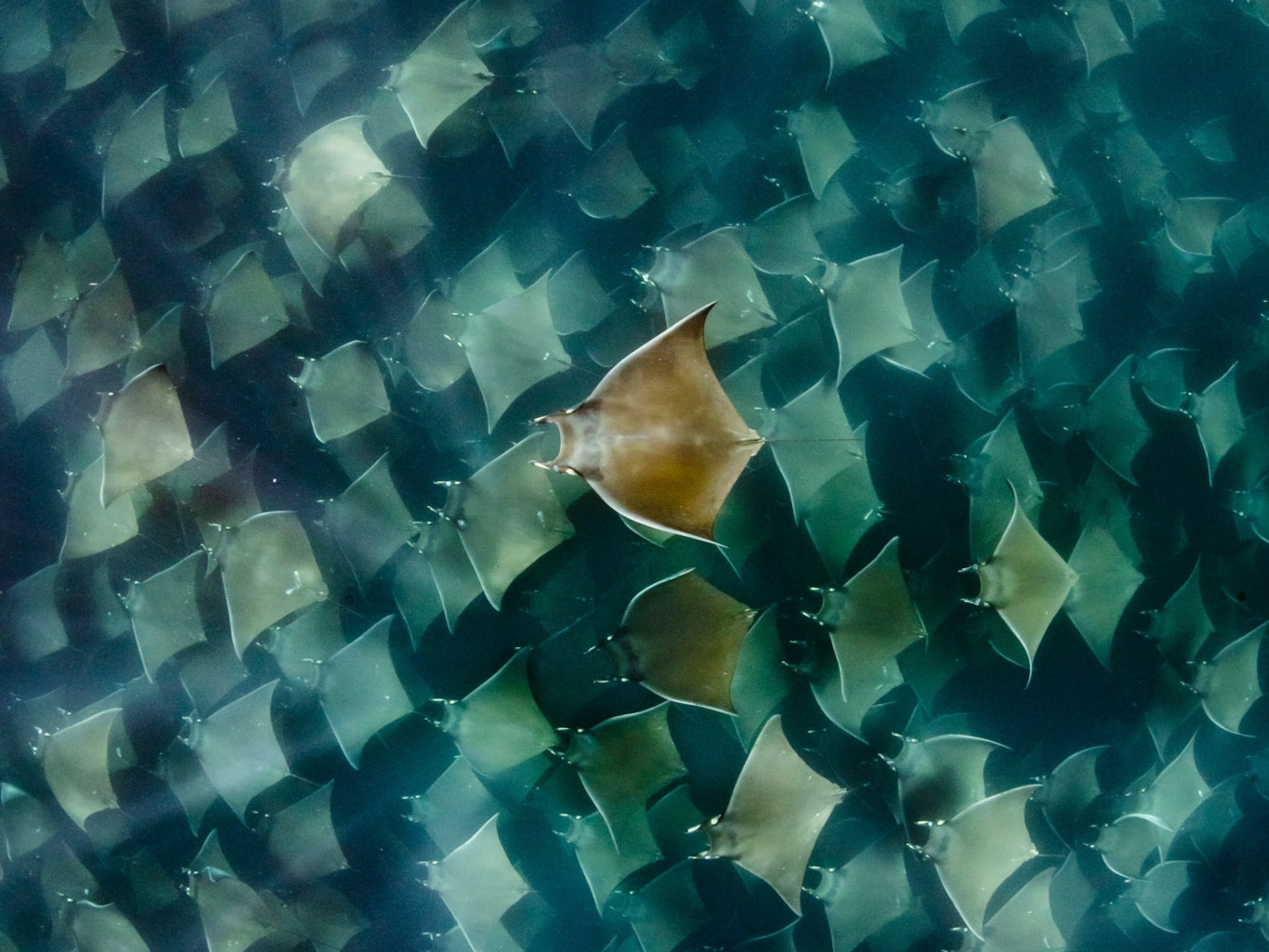
Male Tilapia Use Pee to Attract Females; Could It Help Fish Farms?
Urine of dominant male fish contains a pheromone that draws in females.
Urine may not get most species in the mood, but a pheromone in male tilapia urine serves to attract mates, a new study says.
The research may improve how tilapia—the second most farmed fish in the world—is raised and managed for food, experts say. (Read about the decline of American seafood.)
Scientists already knew that pee played a role in how Mozambique tilapia, Oreochromis mossambicus, interact with each other, but the exact mechanism was a mystery.
It all starts with the tilapia's social structure, which is surprisingly complex for a creature that many will know only as a breaded fillet.
"It's actually a quite interesting fish, because tilapias are highly social animals, so the males form hierarchies in a so-called spawning arena," said study leader Tina Keller-Costa, of the Centre of Marine Sciences at the University of Algarve in Portugal.
"They dig nests in the sand, and the dominant males are usually in the center and they aggressively defend a small territory. And those are the ones that have access to the females."
During these rivalries, the males pee a lot. When scientists examined the urine of dominant and subordinate males, they found a pheromone that contains a certain steroid similar to progesterone, a female reproductive hormone, according to the study, published September 22 in the journal Current Biology.
The more dominant a male tilapia was, the more of the pheromone its urine contained. (Also see "Growing Teeth and Four More Odd Uses for Urine.")
According to the study, females lurking nearby can smell the pheromone, and use it to suss out the dominant—and thus more genetically desirable—males, said Keller-Costa.
Pissing Contest
Not only did the dominant males have more of the female-attracting pheromone in their urine, but these individuals also had bigger bladders with more muscle and thus control, the team found. (Also see "Turtles Urinate Via Their Mouths—A First.")
"They can extend the bladder, and that enables them to hold on to larger urine quantities. When they're facing a female or when they're facing a competitor, they're literally, actively squeezing it all out," said Keller-Costa.
In contrast, the inferior males "have very small bladders, and they don't store their urine the way the dominant males do." As a result, they release a smaller volume of pheromones in their pee.
The pee pheromone not only draws in a female—it also actually primes her reproductive system, stimulating hormones that cause her eggs to ripen, the study discovered.
"This is important because they're external fertilizers, so the males are releasing the sperm and the females are releasing the eggs and that has to be well synchronized," said Keller-Costa. (See "New Law of Urination: Mammals Take 20 Seconds to Pee.")
"So this is a way for the male to make sure that the female is ready to release the eggs."
Stopping Foreign Invaders
Tilapia is now the second most farmed fish by volume in the world after carp and before salmon, and is known for being tasty, nutritious, and easy to produce. (See "Salmon Farming Gets Leaner and Greener.")
There are nearly a hundred species of tilapia, though the majority consumed as seafood are two species: Mozambique tilapia and Nile tilapia.
But the popularity of tilapia as a food source has resulted in a serious invasive species problem that Keller-Costa hopes the new research may help address.
Many fish farms are open, so the cultivated animals can easily escape into other freshwater bodies, such as rivers and lakes.
As a result, "tilapia is now a very successful invader in many parts of the world," said Keller-Costa.
If these invasive tilapia start to take up residence in a new freshwater ecosystem, "it can outcompete most of the native fauna, so it's a real problem."
Related Topics
Go Further
Animals
- How can we protect grizzlies from their biggest threat—trains?How can we protect grizzlies from their biggest threat—trains?
- This ‘saber-toothed’ salmon wasn’t quite what we thoughtThis ‘saber-toothed’ salmon wasn’t quite what we thought
- Why this rhino-zebra friendship makes perfect senseWhy this rhino-zebra friendship makes perfect sense
- When did bioluminescence evolve? It’s older than we thought.When did bioluminescence evolve? It’s older than we thought.
- Soy, skim … spider. Are any of these technically milk?Soy, skim … spider. Are any of these technically milk?
Environment
- Are the Great Lakes the key to solving America’s emissions conundrum?Are the Great Lakes the key to solving America’s emissions conundrum?
- The world’s historic sites face climate change. Can Petra lead the way?The world’s historic sites face climate change. Can Petra lead the way?
- This pristine piece of the Amazon shows nature’s resilienceThis pristine piece of the Amazon shows nature’s resilience
- Listen to 30 years of climate change transformed into haunting musicListen to 30 years of climate change transformed into haunting music
History & Culture
- Meet the original members of the tortured poets departmentMeet the original members of the tortured poets department
- Séances at the White House? Why these first ladies turned to the occultSéances at the White House? Why these first ladies turned to the occult
- Gambling is everywhere now. When is that a problem?Gambling is everywhere now. When is that a problem?
- Beauty is pain—at least it was in 17th-century SpainBeauty is pain—at least it was in 17th-century Spain
Science
- Here's how astronomers found one of the rarest phenomenons in spaceHere's how astronomers found one of the rarest phenomenons in space
- Not an extrovert or introvert? There’s a word for that.Not an extrovert or introvert? There’s a word for that.
- NASA has a plan to clean up space junk—but is going green enough?NASA has a plan to clean up space junk—but is going green enough?
- Soy, skim … spider. Are any of these technically milk?Soy, skim … spider. Are any of these technically milk?
Travel
- Dina Macki on Omani cuisine and Zanzibari flavoursDina Macki on Omani cuisine and Zanzibari flavours
- How to see Mexico's Baja California beyond the beachesHow to see Mexico's Baja California beyond the beaches
- Could Mexico's Chepe Express be the ultimate slow rail adventure?Could Mexico's Chepe Express be the ultimate slow rail adventure?




